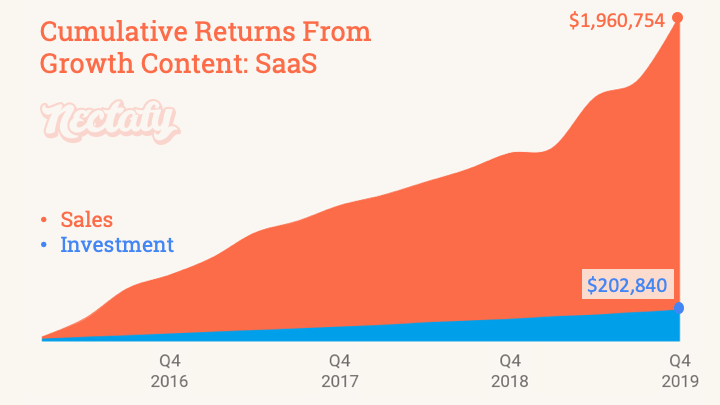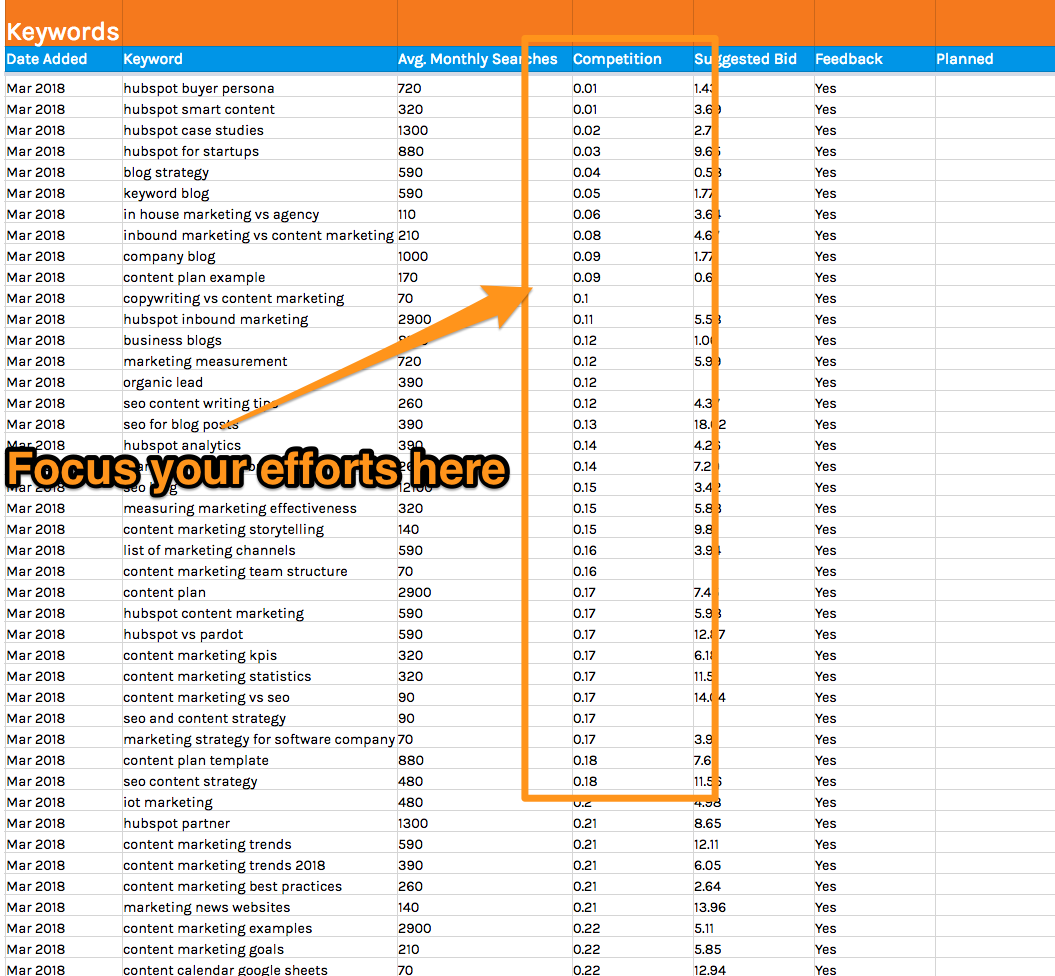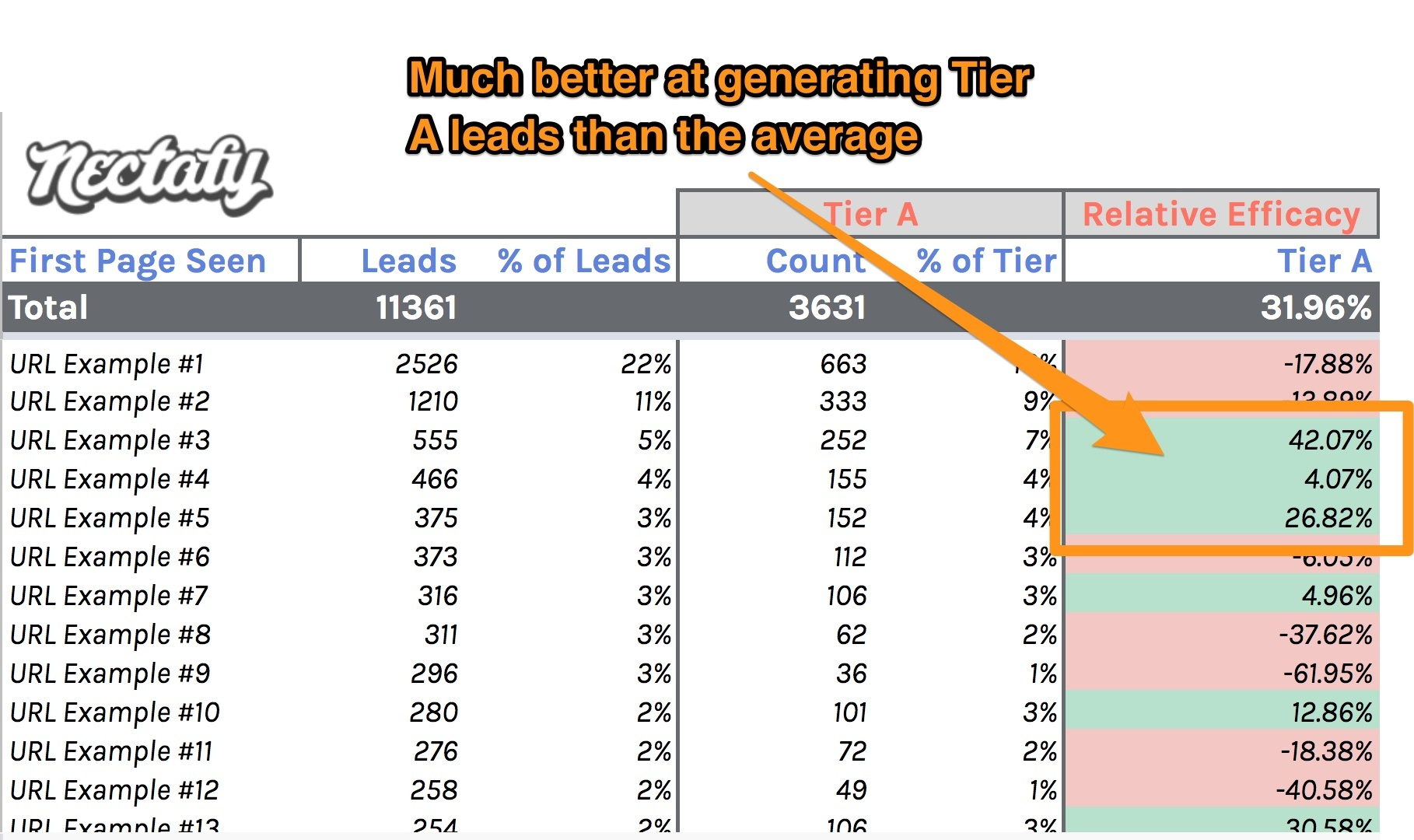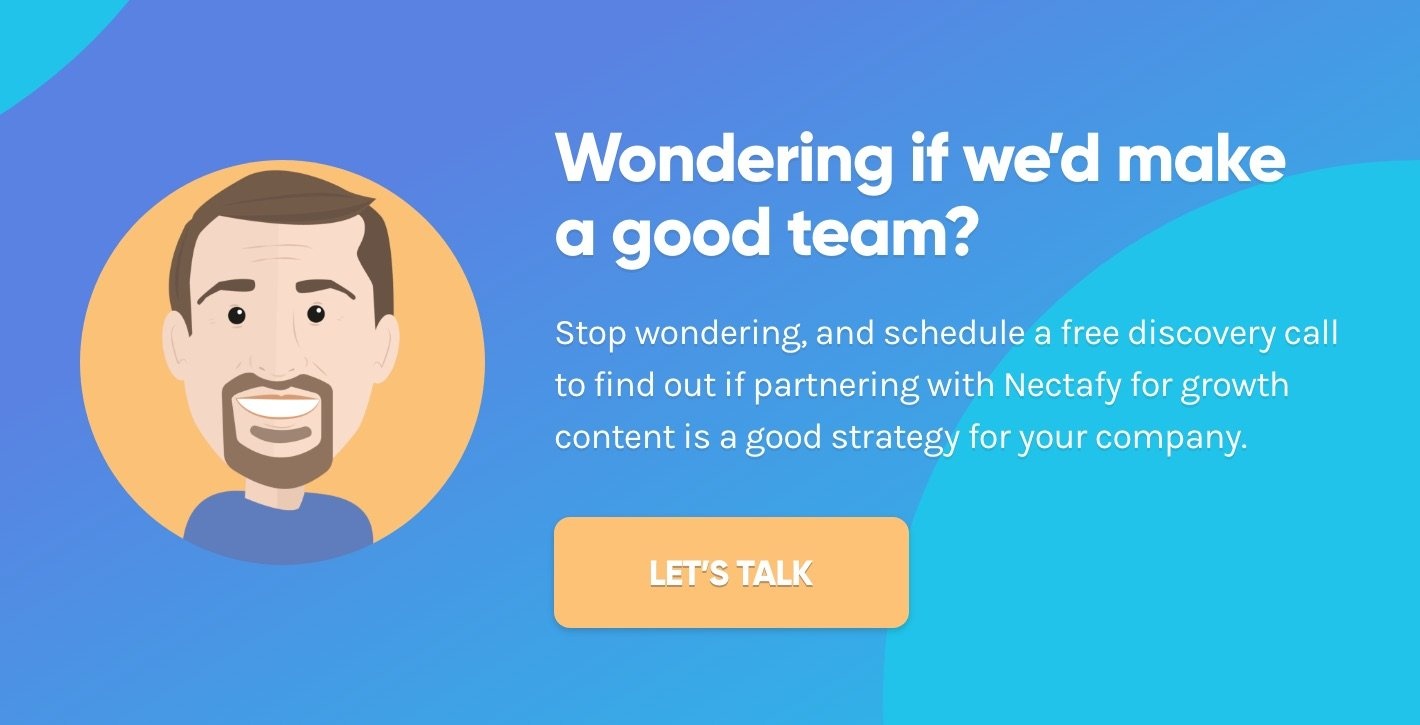How To Generate $2 Million In Sales With Growth Content [Case Study]
![How To Generate $1.1 million In Sales With Growth Content [Case Study]](https://www.nectafy.com/hubfs/images/Blog/How%20To%20Generate%20$1.1%20million%20In%20Sales%20With%20Growth%20Content%20%5BCase%20Study%5D.jpg)
You’ve read a lot of tips out there about making content marketing work, and maybe even how to calculate and track ROI. But you rarely hear the real numbers. Today, that’s what we’re sharing.
If you’re considering hiring someone to help you grow your business with content marketing—or you’ve narrowed down your options and are wondering what you might experience when you work with Nectafy—take a look at these actual numbers about B2B content marketing ROI for one of our clients.
Or, if you’re trying to get your own marketing to work, read about the key factors that helped us succeed and some actionable steps you can take no matter where you are in your growth content journey.
Cumulative Returns From Growth Content
In the graph below, you’ll see growth for this client from Q1 2016 to Q4 2019. You may remember this client actually started working with us in February 2015—almost a year earlier. But because we didn’t track ROI that first year, we showed information only for the periods we had solid information.

What is the biggest factor for this client’s growth?
Using a phased approach to keyword difficulty has been the most important factor for helping this client grow.
- In Phase 1, our goal was to get on page one of Google (rank) for the keyword “how to create a Balanced Scorecard.”
- In Phase 2, our goal was to rank for the keyword “Balanced Scorecard template.”
- In Phase 3, our goal is to rank for the keyword “Balanced Scorecard” itself and beyond.
At each phase, we created content that addressed targeted keywords and established authority. We didn’t attempt to rank for the biggest keywords in phases one or two; instead, we targeted less competitive keywords we believed we could rank for. Over time, we targeted increasingly difficult-to-rank-for keywords.
By creating content for the right keywords at the right time, we gradually built authority and could ultimately rank for the most difficult (and valuable) keywords.
If we skipped phases one and two and targeted the client’s most competitive keywords first, we wouldn’t have seen growth for at least a year (possibly longer), and the client wouldn’t have been able to justify the cost of creating growth content.
“Nectafy has helped us quickly and exponentially grow our website traffic, leads, and free trial requests. With all this growth from good content, we've been able to shift our focus from figuring out how to attract people to talking to the right ones who come through the funnel.”
Growth Content Tips You Can Apply
1 Go after keywords your website’s current authority level can handle.
Write about topics that have lower keyword difficulty than your current Domain Authority. You can do this by finding the patterns of keywords in your industry that build your authority. For example, identify all the keywords (small and large, easy and difficult) you would like to ultimately rank for, and then systematically build up to writing about your largest, most difficult keywords. (Check this article for more.)
The image below shows the types of keywords a content agency like Nectafy is interested in ranking for; the highlighted section shows less competitive keywords that a new agency would write about first.

2 Rewrite posts about 18 months after they’ve originally posted.
We’ve found that, on average, articles begin to slip in rankings after about 18 months, at which point they need to be rewritten. In the image below, you can see how rewriting these formerly high-performing posts allowed them to achieve the same peak they once did, and you can also likely surpass the previous monthly visit record for them. You can get the step-by-step process for this in our article, How To Grow Website Traffic By 37% With Your Existing Blogs [DATA].

3 Focus on writing articles that bring in the right leads once you are getting 25K+ organic visits per month.
Once you’re bringing in more than 25,000 organic visits monthly (which is the beginning of what we call phase 3), write more about the topics that bring in specific types of leads, sales qualified leads, customers, etc. You don’t need complicated blog analytics to do this—all you need is a HubSpot list and these two contact properties:
- Lead tier (or however you measure the quality of a lead like lead score, lead stage, etc.)
- First page seen
There is a very specific method to getting this data, which we outline step-by-step in our article, How To Statistically Prove What Blog Posts Bring In The Best Leads. With that information, you can see what is working and how to write more content like it.

Looking for a partner to help you do all this?
You can do all these things on your own, but if you’d rather partner with a team of experts who can lead the way, talk to us. We’ll have an honest conversation about how to get meaningful business results for your company using growth content.



